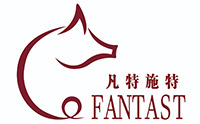29
2022-11
Five methods for identifying choline chloride
author:
source:
Feed Industry Information Network
Choline chloride is a type of B-complex vitamin (VB4), commonly available in pure form, 70% aqueous form, 50% and 60% powder form. Among them, powder form is common, but it is heavily adulterated and has the most quality problems. Testing according to the national standard GB10818-89 (hereinafter referred to as the national standard) cannot identify authenticity, and the measured content cannot truly reflect the intrinsic quality. Especially the residual amount of trimethylamine, an intermediate product of choline chloride.
1. Sensory judgment.
Choline chloride 50% and 60% powders are generally white or yellow brown (depending on the carrier), dry and flowable powder particles, with strong hygroscopicity and a special odor rather than ammonia odor. However, absorbing carbon dioxide and moisture from the air can release an ammonia odor, so attention should be paid.
To effectively identify various adulterated choline chloride, the following five methods can be used: (mainly the first three)
(1) Silver content method: determined according to GB10818-89 (national standard method)
(2) Non aqueous titration method: Weigh about 1g of the sample dried at 105 ℃ for 2 hours and transfer it to a 100ml dry volumetric flask. Add 80ml of methanol, shake for 15 minutes, then dilute with methanol and shake well. After filtration, take 25.00ml of the filtrate and transfer it to a triangular flask. Evaporate it in a boiling water bath, add 40ml of acetic acid to dissolve the solution, add 5ml of acetic anhydride, 5ml of mercury acetate, 2 drops of crystallization indicator, and titrate with a standard solution of perchloric acid (0.1mol/l) until the solution turns pure blue, while making a blank.
Choline chloride content%=139.63 × c × (V-V0)/m
(3) Nitrogen determination method: Weigh about 3g of the sample into a 250ml dry stoppered triangular flask, add 100ml of water, shake for 15 minutes, dry filter, take 10ml of the filtrate, determine its total nitrogen content N according to the Kjeldahl nitrogen determination method, take 10ml of the filtrate into a digestion tube, add 20ml of water, 50ml of sodium hydroxide (400g/l), use 100ml of 0.6% boric acid solution as the absorption solution, distill for 7 minutes, add 2 drops of methyl red bromocresol green mixed indicator, titrate with hydrochloric acid standard solution (0.1mol/l) to a light red color, and calculate the nitrogen content N1
Choline chloride content%=(N total - N1) × 139.6/14.0=(N total - N1) × 9.97
Residual amount of trimethylamine hydrochloride%=N1 × 139.6/14.0=N1 × 6.83
(4) Sodium tetraphenylborate method: Weigh about 1g of the sample into a 100ml volumetric flask, dissolve and dilute to the mark with water, shake well, filter, accurately measure 10ml into a 100ml beaker, add 20ml of water, 1 drop of aluminum trichloride (10%), 20ml of sodium tetraphenylborate (2%, high-quality pure sodium tetraphenylborate 2g, dissolve and dilute to 100ml with water, add 2 drops of 0.5mol/l NaOH and shake well for 24 hours, filter. The solution has a shelf life of 5 days. Shake continuously for 30 minutes, filter with a pre dried and weighed crucible, wash the beaker four times with about 10ml each time, and filter the filtrate together. Dry the precipitate at 105 ℃ for 2 hours, take it out and cool it in a dryer, and weigh it.
Choline chloride content%=precipitation mass (g) × 329.8/sample mass (g)
(5) Lei's salt weight method: First, dry the sample in a 105 ℃ drying oven to a constant weight, accurately weigh 1g, place it in a 100ml volumetric flask, add 70ml of water, mix and shake repeatedly, then heat it in a water bath at about 80 ℃ for 15 minutes, take it out and shake it on an electric oscillator for 20 minutes, then dilute it to 100ml with water, filter and take 10ml of the filtrate into a 100ml tall beaker, cool it to below 5 ℃ in a cold bath, add 15ml of Lei's salt solution [Lei's salt (diammonium tetrathiocyanate) formaldehyde solution: 2% (m/v)], do not stir for 30 minutes, let the precipitate stand and age for 15 minutes, and then transfer the precipitate quantitatively into a glass sand core crucible that has been dried at 105 ℃ to a constant weight beforehand. Filter under reduced pressure, wash the precipitate 3-4 times with 10ml of water each time, place the crucible filter containing the precipitate in an oven, dry at 105 ℃ for 2 hours, and weigh.
Choline chloride content%=(m1-m2)/m0 × 3.3045
In the formula: m0: Sample quality
M1: The mass of an empty glass sand core crucible filter with constant weight, g
M2: The quality of the precipitate and crucible filter after drying, g
3.30456: Conversion factor.
Attention: 1. During the synthesis of choline chloride, for every 1 percentage point increase in the residual amount of intermediate product trimethylamine hydrochloride, the content of choline chloride will increase by 1.4 percentage points when measured by non-aqueous titration method, resulting in a greater deviation from the true content of choline chloride.
2. Choline chloride mixed with nitrate, nitrite, urea, urea formaldehyde polymer, etc. cannot be determined by nitrogen determination method.
Lastest Literatures
2023-04-03
The relevant characteristics of enzyme preparations and their application in animal feed
Feed contains various anti nutritional factors, which can limit the release of nutrients in the feed. In addition, the lack or absence of digestive enzymes in the animal's gastrointestinal tract can lead to a lower digestion rate of feed, affecting the utilization rate of feed and hindering the healthy growth of animals.
2023-02-13
Process nutrition and quality management of chicken powder
Animal protein raw materials include chicken meal, pork meal, fish meal, meat and bone meal, animal by-products
2022-12-14
The mechanism of action of anti nutritional factors and their effects
Antinutritional factors mainly reduce the body's utilization of nutrients such as protein and energy by consuming more endogenous proteins
2022-12-12
Design and precautions of feed formula
Feed products should have the following characteristics: nutrition, physiology, marketability, safety, economy, and practicality.



